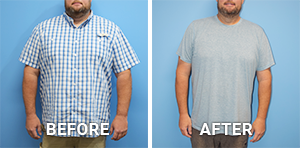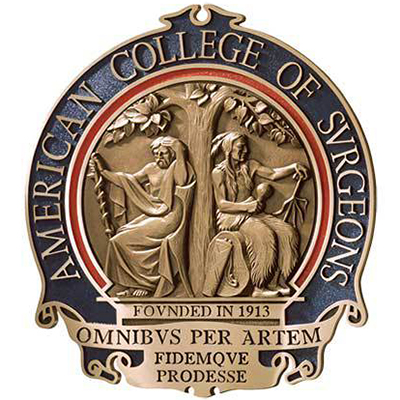Sleeve Revision to Bypass
Conveniently located to serve the areas of Houston and Katy

Robotic revision of a Lap-Band or a gastric band is one of the most advanced and effective methods of replacing a defective or malfunctioning Lap-Band and revising to a vertical sleeve gastrectomy or gastric bypass. Almost a decade ago, the Lap-Band was a very popular procedure for treating patients who struggled with obesity. Since then, sleeve surgery and other procedures have emerged as stronger methods, with far fewer overall complications and measurably better results.
At Texas Endosurgery, Dr. R.M. Bonnor M.D, F.A.C.S. is a regional leader in robotic surgery. His patients experience excellent outcomes with a quicker recovery and less pain thanks to the precision of robotically assisted surgery. To learn more, schedule a consultation online or call our Houston-area office at (281) 579-5638.
Contents
Should I Get a Lap-Band Revision?
In Lap-Band revision, Dr. Bonnor will remove the Lap-Band device in patients who are experiencing complications or who are simply not seeing significant, sustainable weight loss.
When it was introduced in the United States in 2001, the Lap-Band offered a minimally invasive, adjustable solution to bariatric surgery.[1] At the time, the Lap-Band was perceived to be a safe and relatively simple weight loss procedure. However, patient complications became more apparent over time. Once the favored means of surgical weight loss, the Lap-Band has since been supplanted by more effective techniques, such as sleeve gastrectomy. Most patients choose a revision to a sleeve gastrectomy based on the fact that a lap band and sleeve gastrectomy are conceptually the same.
Revise to a More Effective Weight-Loss Method
As one of Houston’s preeminent bariatric surgeons, Dr. R.M. Bonnor can revise a previous Lap-Band procedure. He offers his patients a second chance at a long and healthy life with his series of bariatric revision surgeries at Texas Endosurgery. His robotic revision of Lap-Band procedure leverages sophisticated surgical techniques to correct issues associated with a previous Lap-Band surgery.
The Benefits of Robotically Assisted Surgery
Dr. Bonnor is an expert in robotic surgery. The approach employs a state-of-the-art robotic system that enhances his field of vision, manual dexterity and surgical precision.[2] Robotically assisted surgery allows for a smoother procedure overall, with far fewer risks when compared to conventional methods. A smoother surgery means a quicker, easier recovery for patients.
Candidates
Qualified candidates for robotic revision surgery underwent a Lap-Band procedure to treat their obesity at some point over the last 20 years. Like many other Lap-Band patients, they began experiencing unwanted side effects and unexpected issues as a result of the malfunctioning silicone device. Ideal candidates are still seeking an effective treatment for obesity.
How Long Does a Lap-Band Last?
Lap-Band devices were never meant to last forever. Many do not last 10 years.[3] With time and regular wear, a Lap-Band’s performance will inevitably decline. Malfunctioning Lap-Band devices are no longer able to sufficiently regulate weight gain. They may even pose a health risk to the patient.
What is Lap-Band Intolerance?
Lap band intolerance is a distressing complication that some patients experience after Lap-Band surgery.
Symptoms of Lap-Band Intolerance
- Excessive nausea
- Vomiting
- Difficulty swallowing
- Pain after eating
Personal Consultation
At your personal consultation, Dr. R.M. Bonnor will assess your candidacy for robotic gastric band revision surgery. A private consultation at Texas Endosurgery is an opportunity to learn more about your options. Dr. Bonnor and his team are eager to inform you.
Schedule a consultation and find out if a robotic revision of a previous Lap-Band is the best option for you. You can call our Houston-area office at (281) 579-5638.
Procedure

Robotic-assisted surgery gives Dr. Bonnor greater precision and more control over your bariatric revision procedure. The specialized system includes tiny instruments that are controlled by a console that sits right beside him in the operating room. The high-tech system provides Dr. Bonnor with a magnified, three-dimensional view inside your body so he can operate effectively.[4] The instruments have a wider range of motion than a surgeon’s hand so they bend and rotate strategically.
Recovery & Results
Robotically assisted bariatric revision surgery is less invasive than traditional surgery. Smaller incisions and more controlled movements mean much faster healing times. Quicker healing shortens your hospital stay, and you get the opportunity to start your subsequent weight loss strategies sooner. For example, patients with a sleeve will see a significant improvement in their health and well-being.
Advantages of Vertical Sleeve Gastrectomy
- Long Term Solution (no silicone device)
- Minimal dysphagia or difficulty eating
- Overall effective weight loss procedure when combined with proper nutrition
- Fewer overall complications and very low side effect profile
Additional Bariatric Revision Surgery Options
Dr. R.M. Bonnor serves his Houston community with a wide range of bariatric revision surgery options to help correct complications caused by older surgeries. While the Lap-Band once had broad support in the medical community, these silicone devices were a temporary solution for patients afflicted by obesity and its attendant health risks. Dr. Bonnor is an expert in the latest, most effective bariatric techniques so that he can give his patients an opportunity for a healthy lifestyle.
Lap-Band to Gastric Bypass Revision
Gastric bypass revision is a more involved procedure than a sleeve. A gastric bypass may be more appropriate in patients with diabetes and acid reflux when compared to a sleeve gastrectomy. Consider a private consultation at Texas Endosurgery to see if this or any of our other Bariatric treatments are right for you.
Is Bariatric Revision Surgery Covered by Insurance?
In general, coverage by insurance providers for revisional bariatric surgery mirrors that of the primary procedure. In other words, if you’re 100 pounds over your ideal weight (BMI of 40) or you have significant obesity-related health problems in combination with a BMI of 35. If you’re suffering from complications related to your original procedure, you may be approved for surgery due to the medical necessity of your condition.
FAQ
What is Lap-Band revision surgery?
Lap-Band revision surgery is a procedure to correct an older implant based weight loss procedure. The Lap-Band was a popular approach to treating obesity 15 years ago, but since then, more effective methods, like sleeve, have become the preferred approach. The silicone device employed in the Lap-Band technique was prone to malfunction over time. This led to unsatisfactory results for many patients and unexpected health issues for some others. Lap-Band revision surgery involves safely removing the faulty silicone device and performing a new bariatric procedure that produces better, more lasting outcomes for the patient.
What are signs that your Lap-Band has slipped?
Patients who have had their Lap-Band slip may experience a variety of issues in their gastrointestinal tract. Lap-Bands were once a common treatment for obesity but have fallen out of favor due to reported frequent problems related to the procedure. Malfunctioning or worn out Lap-Bands have been known to slip, causing discomfort and other complications. Lap-Band revision surgery involves removing the malfunctioning device and performing a more effective bariatric procedure, like a sleeve gastrectomy.
Symptoms of Lap-Band Slippage
• Severe heartburn
• Difficulty swallowing
• Vomiting
• Night cough
• Chest pain or pressure
Are Lap-Bands still being used?
Lap-Band surgery hit its peak popularity in the United States in 2008. Their use has significantly declined since then. At first, Lap-Band surgery was appealing because it was a minimally invasive procedure that employed an adjustable silicone device to regulate the patient’s food intake. Since their introduction, however, the mounting medical evidence has shown that the Lap-Band was not as successful in treating obesity as many had first believed.
References
- Carlin, A. M., Zeni, T. M., English, W. J., Hawasli, A. A., Genaw, J. A., Krause, K. R., Schram, J. L., Kole, K. L., Finks, J. F., Birkmeyer, J. D., Share, D., & Birkmeyer, N. J. O. (2013). The Comparative Effectiveness of Sleeve Gastrectomy, Gastric Bypass, and Adjustable Gastric Banding Procedures for the Treatment of Morbid Obesity. Annals of Surgery, 257(5), 791–797. https://doi.org/10.1097/sla.0b013e3182879ded
- Falk, V., Sheppard, C., Kanji, A., Birch, D., Karmali, S., & de Gara, C. (2019). The fate of laparoscopic adjustable gastric band removal. Canadian Journal of Surgery, 6(5), 328–333. https://doi.org/10.1503/cjs.001918
- Suter, M., Calmes, J., Paroz, A., & Giusti, V. (2006). A 10-year Experience with Laparoscopic Gastric Banding for Morbid Obesity: High Long-Term Complication and Failure Rates. Obesity Surgery, 16(7), 829–835. https://doi.org/10.1381/096089206777822359
- Ayloo, S. M., & Choudhury, N. (2014). Robotic revisional bariatric surgery: single-surgeon case series. The International Journal of Medical Robotics and Computer Assisted Surgery, 11(3), 284–289. https://doi.org/10.1002/rcs.1622








